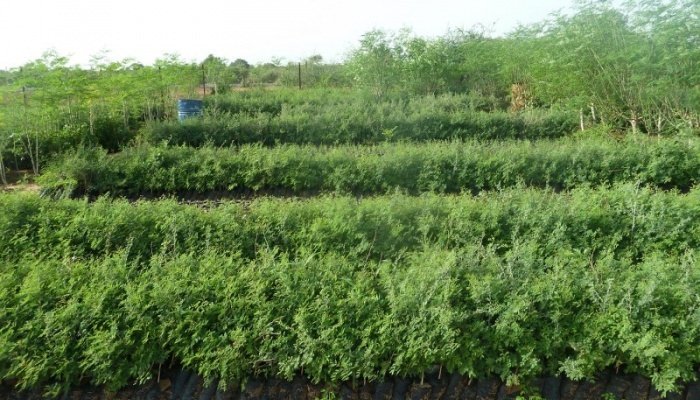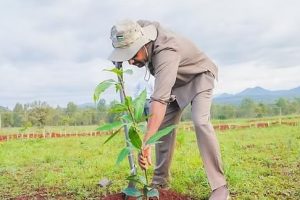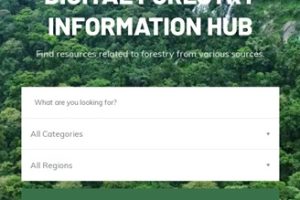
BY GIRMACHEW GASHAW
Two years ago Ethiopia has announced a vision of planting some 10 million indigenous trees in three years. This year the country has been preparing to hit the target set of planting some six billion trees.
The objective of this campaign is to contribute to the worldwide effort to reduce pollution, address climate change and restore the natural habitats that contribute positively to the climate crisis. The reforestation programme of planting 40 tree seedlings per head has been an inspiration for the people of Ethiopia, to come together for a noble goal.
Ethiopia has been preparing 7 billion tree seedlings for its third-year tree planting campaign, out of which one billion will be allocated to the neighbouring countries to expand Ethiopia’s Green Legacy Initiative.
Agriculture State Minister, Sani Redi said that neighbouring countries have been showing interest to join the initiative.
“So far, Djibouti and South Sudan have shown interest to take their shares as they have been preparing to receive the seedlings,” he said.
As climate change is a regional and global threat, Sani hopes that other invited East African countries will follow suit to fight the challenge together.
The state minister stressed that Ethiopia shares 1 billion tree seedlings not because it is in a better position, but because of concern about the challenges the region is facing in terms of climate change and to encourage collaboration with other nations to mitigate the problem.
“We have invited all East African countries to be part of the initiative to develop together for the challenges of climate change have been affecting the entire region without any barrier that requires strong collaboration at sub-regional, regional and global level,” Sani noted.
Despite the upcoming general election and the challenges of COVID-19, among others, the nation is determined to continue with the Green Legacy Initiative by planting 6 billion seedlings this year. Over 110,000 sites are now growing saplings and over 3.24 billion tree seedlings have been readied, it was learned.
Regional states of Ethiopia bordering the neighbouring countries have also been informed to produce saplings so that they could share them with adjacent neighbouring countries or states.
Afar, Amhara, Benishangul-Gumuz, Gambella and Oromia regional states are the regions preparing the tree seedlings for the two countries. The Green Legacy Initiative launched in 2019 aspires to plant 20 billion trees in Ethiopia in four years.
The national initiative is led by steering and technical committees drawn from ministries of Agriculture, Water, Irrigation and Energy, Innovation and Science, Education, Urban Development and Construction, and Environment, Forest and Climate Change Commission.
Biodiversity Institute Deputy Director-General, Feleke Woldeyes said on his part the focus on planting indigenous trees are highly ignored. Out of over four billion trees planted two years ago, only 1 million were indigenous trees, it was learned. There is now a plan to increase the number by tenfold in the coming three years.
Feleke, who pointed out the multiple benefits of indigenous plants for sustainable climate, productivity and preserving biodiversity, added that “30 different kinds of indigenous trees suitable for various agro-ecological zones have been identified.”
He stated that Ethiopia is among the 20 megadiverse countries in biodiversity resources in the world as it has got over 6,000 plant species.
The country’s current forest coverage is 15.5 per cent after consecutive planting initiatives and campaigns as well as after the inclusion of dense lowland forests rather than plantings in high lands, it was learned.
Last Ethiopian year, the nation has already planted 5 billion seedlings by building on the success of the “Green legacy” project which planted 4 billion trees seedlings two years ago.
Over the last several years, Ethiopia has lost billions of trees and forest resources because of many reasons including a lack of awareness around afforestation and sustainable development. Today, most of the seedlings planted are from indigenous trees that are very well adapted to the local environment.
Ethiopia has set a high bar for itself, and the world: in its development blueprint, the Climate Resilient Green Economy (CRGE) Strategy, it aims to achieve middle-income status by 2025 while transitioning to a climate-resilient green economy.
Protecting existing forest and promoting tree-based landscape restoration is central to these goals as trees contribute not only directly to economic development and higher living standards, but also climate change mitigation and adaptation. Increasing the number of trees will also contribute to Ethiopia’s international commitments, including to the Sustainable Development Goals, the Convention on Biological Diversity, the United Nations Convention to Combat Desertification, and the African (AFR100) and global (Bonn Challenge and New York Declaration on Forests) restoration targets.
While trees have played a significant role in many of Ethiopia’s successful restoration initiatives, tree-based landscape restoration needs to be scaled up in Ethiopia is going to meet its ambitious goals.
No single governmental or nongovernmental institution can singlehandedly scale-up tree-based landscape restoration in agricultural, pastoral and forest landscapes to regain needed ecological functionality and achieve targeted standards of living across Ethiopia. Scaling up the restoration of degraded landscapes will require many state and non-state actors to act in concert.
Version 0.0 of the National Tree-Based Landscape Restoration Potential and Priority Maps presented here constitutes a first step in coordinating Ethiopia’s large-scale restoration efforts. The maps aim to guide decision-makers as to where additional trees could benefit Ethiopian landscapes; which tree-based landscape restoration options could be implemented in these landscapes; and where to prioritize cross-sectoral implementation. The maps are the product of a cross-sectoral effort of national and regional experts led by the Ministry of Environment, Forest and Climate Change (MEFCC).
While conducting a study on the factors affecting the survival of tree seedlings in the drylands of Northern Ethiopia, Abraham Mahari said establishing forest plantation on degraded lands can play a key role in harmonizing long-term forest ecosystem rehabilitation or restoration goals. Forest plantations, using appropriate tree species can play an important role in the tropical ecosystem rehabilitation. In such cases, planting of nursery-raised seedlings may accelerate regeneration. Successful seedling establishment and growth depends on the soil condition and the stored soil moisture to ensure survival into the next growing season.
In the dry and more degraded lands of Northern Ethiopia particularly the Sekota District, farmers have been planting many seedlings of different tree species year after year but the survival of those seedlings are very poor as the area is mainly affected by moisture stress, termite and soil fertility problems.
Again, the area has not been given much research attention and are still lacking. Therefore, the objective of this study was to assess the major factors that affect seedling survival in this particular area as it is critical to understand forest establishment and development.
The study focused on assessing factors affecting the survival of tree seedlings in the degraded drylands of Northern Ethiopia. Most of the problems or factors that are highly affecting the survival of tree seedlings are compounded by environmental factors.
However, the contribution of livestock grazing and termite impacts were also pointed out by the farmers as the main barriers for forest development in the study area. Therefore, proper allocation of species into the site is needed to address the problem and improve forest development.
The Ethiopian Herald 21 April 2021





